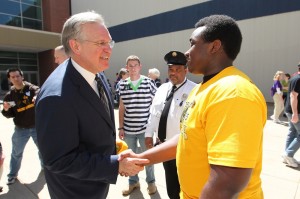For Missourians, the time to consider a solar energy system is now. The Missouri Clean Energy Initiative, passed overwhelmingly as Proposition C in 2008, requires that 15% of the state’s electrical power come from renewable sources by 2021. As a result of the Clean Energy Initiative, Missouri’s power companies are offering financial incentives to customers who help them meet that goal. ” Erin Noble of the Missouri Coalition to the environment points out that those incentives added to the 30% federal tax credit can reduce the initial cost of a solar installation by up to two-thirds.”
In addition, the cost of solar panels has come down about 30% in the last three years.
Solar Energy Use Becoming More Visible
Until recently solar panels have not been a frequent sight in Missouri. Ameren has only about 200 solar power producers integrated into its grid. (Most commonly, Ameren supplies the needed power to supplement solar production, and will buy excess power if solar production exceeds usage.)
Now solar panels are going public. The Missouri Botanical Garden recently installed a 25 kW array of 100 solar panels on its Commerce Bank Center for Science Education. The panels, given to the Garden by Express Scripts, will produce about 32,000 kW-hrs a year—about 5% of this large building’s electricity requirements, or enough electricity to power four to six average homes.
Continue reading Monetary gains make solar power a more practical choice




